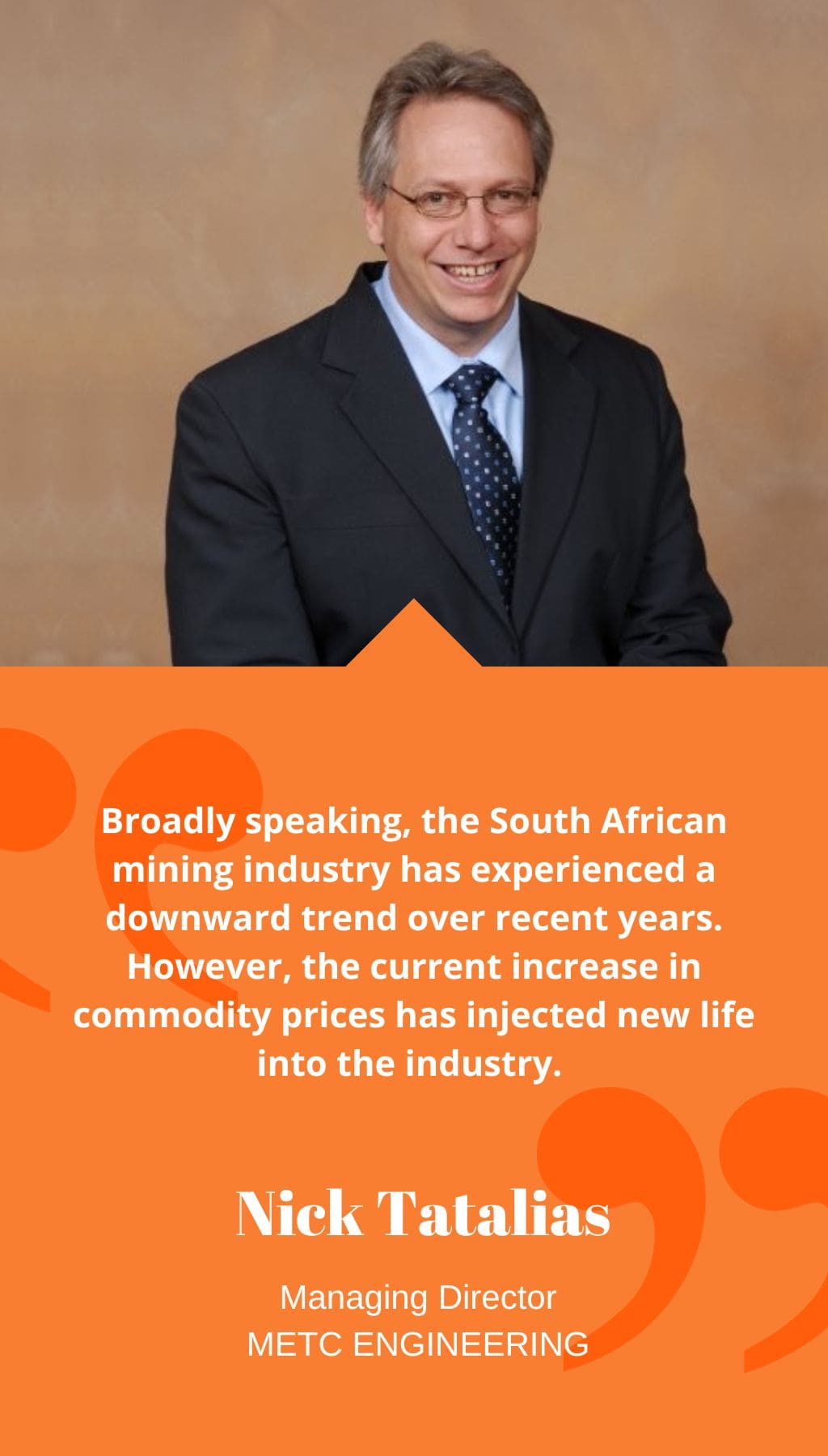
- South Africa | 21 September 2021

Can you give an overview of METC and the company’s history and role in the mining industry?
METC was established in 2017 as a relatively small outfit but has since grown into a medium-sized Engineering, Procurement, Construction, and Management (EPCM) company. Our primary focus is on designing and building metallurgical plants for mines in a flexible and adaptable manner. While our operations are based in South Africa, we also provide services across Africa and beyond. Despite being a boutique engineering firm, we have a diverse range of expertise and experience within our group, allowing us to cater to both mid-tier and major clients in various environments.
Can you highlight some key projects METC has been involved in?
We have successfully delivered over 70 projects to date. One notable project was the Chemaf Mutoshi project in collaboration with Outotec. We provided engineering, procurement, logistics, and construction support for a green-field copper and cobalt recovery plant in Kolwezi, DRC, valued at US$420 million.
Additionally, METC was appointed by MMG to complete a feasibility study for a sulphide and oxide copper concentrator at their Kinsevere mine in Katanga province, DRC. This study involved engineering design, implementation planning, and procurement of long-lead items. We have also provided engineering review and design input for Orion Minerals’ Prieska project.
What is the company’s strategy and approach to reduce costs?
As a medium-sized company, we believe we have an advantage over larger corporations when it comes to delivering value to our clients. We are not bound by rigid, one-size-fits-all expectations and corporate requirements. Instead, we can tailor our designs and solutions to meet the specific needs of each client, ultimately reducing costs and optimizing project outcomes.
How common is the tailings re-treatment process in the Southern African region?
Tailings re-treatment is quite common in the Southern African region. However, the scale and ownership of projects often pose challenges. Many tailings dams in South Africa have been in existence for a long time and have undergone multiple previous re-processing attempts. Each project must be carefully examined as the extraction of materials from tailings can vary in difficulty. While some materials are easier to extract due to advancements in technology, others are more refractory and challenging to recover. It is crucial to assess the most practical and cost-effective solutions, as tailings re-treatment can become expensive. Consolidating geographical tailings areas and building joint re-treatment plants can provide advantages, especially for the recoverable gold and platinum group metals (PGMs) remaining in the tailings dams. However, it is essential to address the socio-economic climate surrounding illegal miners and local communities to ensure responsible and sustainable practices.
How would you describe the current state of the South African mining industry?
Broadly speaking, the South African mining industry has experienced a downward trend over recent years. However, the current increase in commodity prices has injected new life into the industry. More projects are coming online driven by favorable pricing. Nonetheless, there are several structural challenges that need to be addressed. Community issues pose a significant challenge, as mining companies face growing expectations to improve the livelihoods of communities where the government has been unable to deliver. South Africa grapples with a high unemployment rate, and there is often unrealistic pressure on mining companies to shoulder the responsibility of economic development. Despite these challenges, South Africa possesses robust infrastructure, industrial capacity, and expertise, making it a favorable base for launching mining projects.














